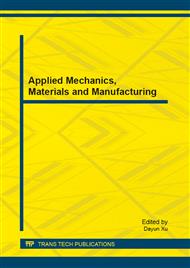p.403
p.408
p.413
p.418
p.424
p.429
p.435
p.440
p.444
A Multi-Objective Optimization Model for Plastic Cup Design Using Mechanical and Environmental Performances
Abstract:
In recent years, environmental issues such as global warming and ozone depletion become more intense. The issues have made many companies include the environmental performances into their product life cycle from design into disposal stage. In the design stage, it is important to determine the optimal dimensions of the product which balancing the mechanical and environmental performances. The aim of this research is to develop a multi-objective optimization model for plastic cup design using mechanical and environmental performances. A case study is given to show the implementation of the model. The optimization model resulted a thickness which is not significantly different comparing to the current practice in the company. The results give more efficient use of material and reduction of production cost and environmental impact.
Info:
Periodical:
Pages:
424-428
Citation:
Online since:
August 2013
Keywords:
Price:
Сopyright:
© 2013 Trans Tech Publications Ltd. All Rights Reserved
Share:
Citation:


